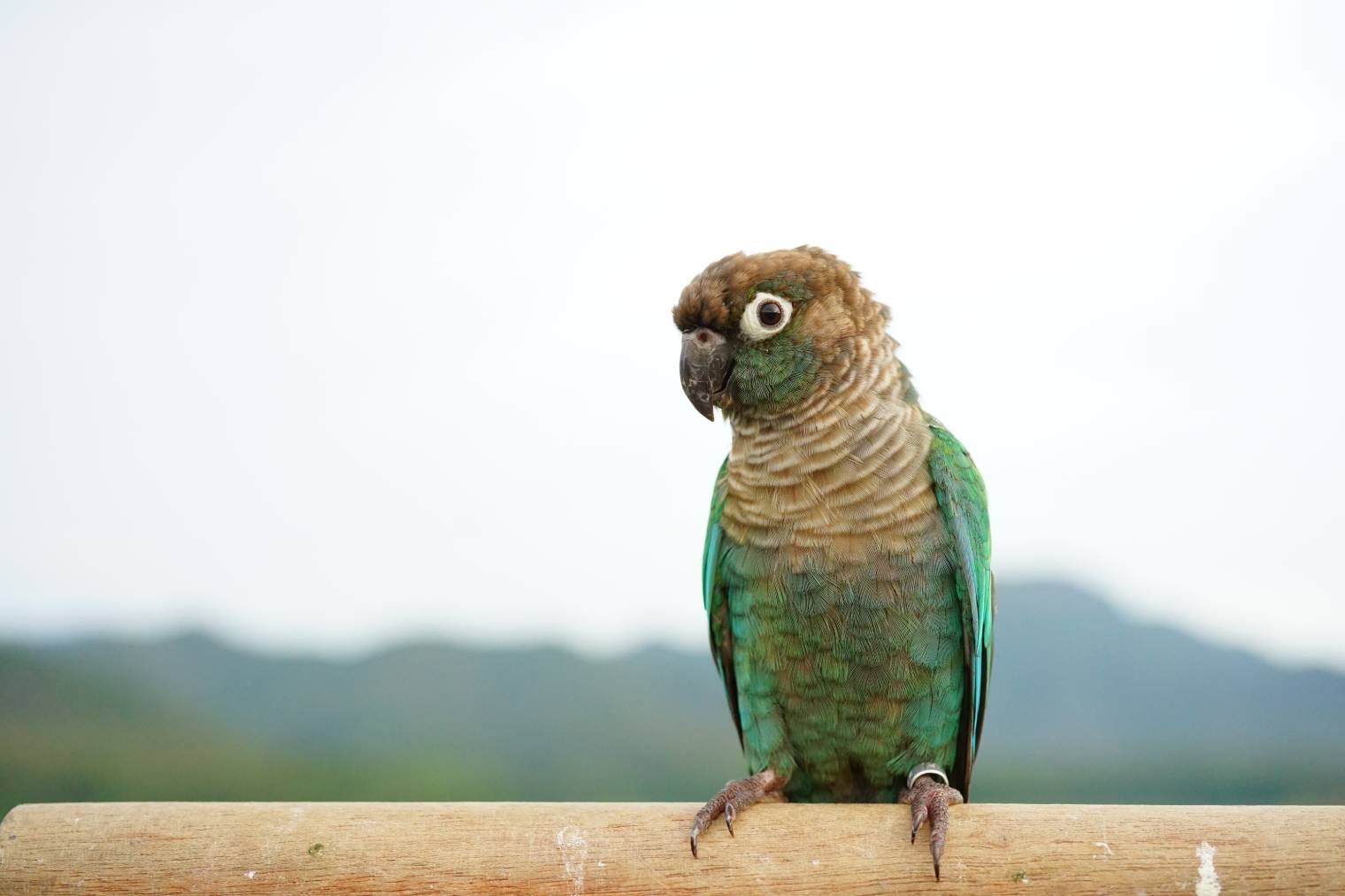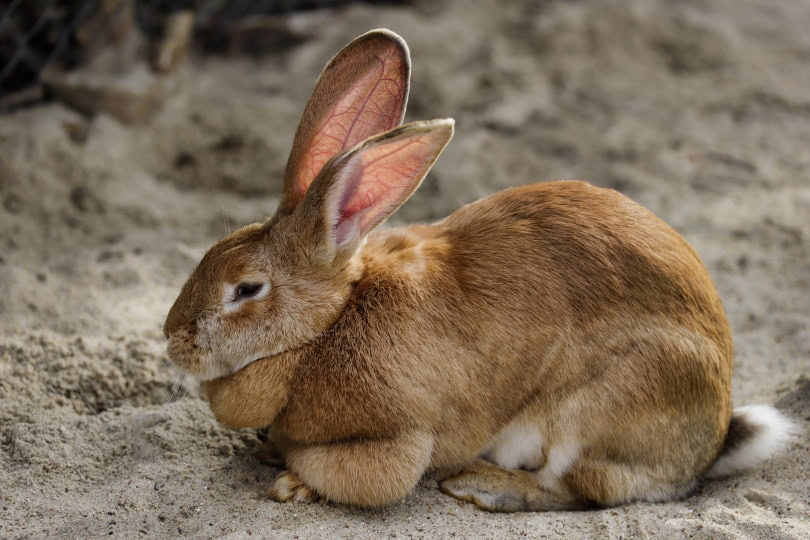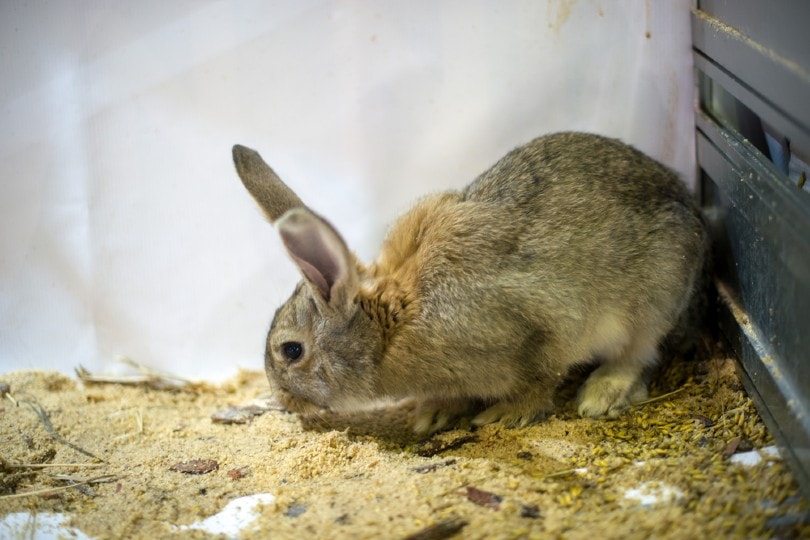The Green-Cheeked Conure is a small parrot that makes a wonderful pet. They are native to heavily forested and woodland areas of Paraguay, Argentina, and parts of Brazil. While Green-Cheeked Conures can be outgoing and funny, they also can be a bit shyer than other conures. This parrot is popular among bird lovers because of their small size, pleasant temperament, and relatively low noise level.
A normal Green-Cheeked Conure has gray chest feathers, bright green cheeks, green wing feathers, and a red tail. Over the years, several color mutations have occurred in captive populations, including the following six Green-Cheeked Conure mutations.
Along with the mutation descriptions, we included general information about each mutation so you can learn more about each bird.

The 6 Green-Cheeked Conure Mutations
1. Cinnamon Green-Cheeked Conure
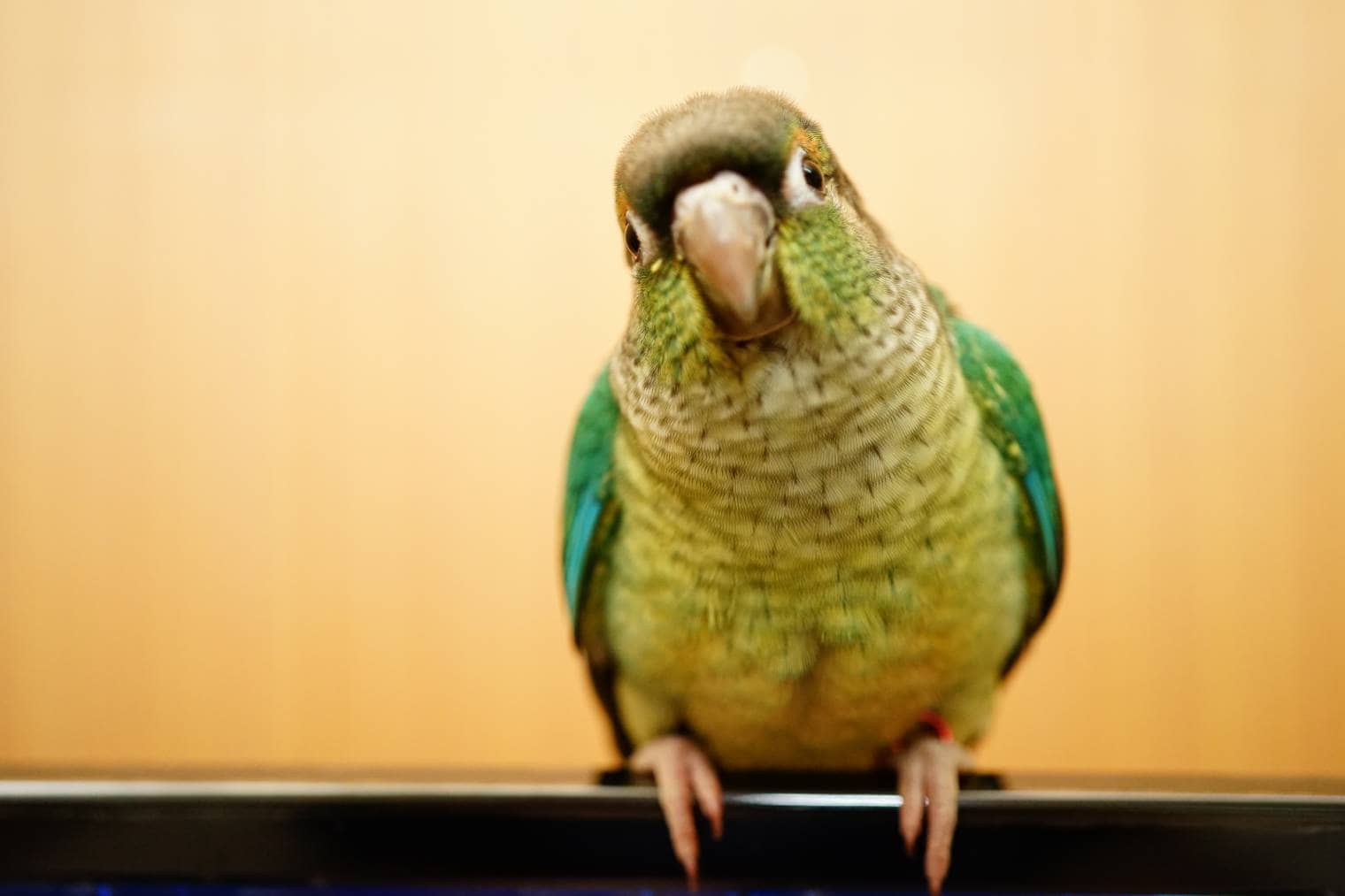
A Cinnamon Green-Cheeked Conure mutation features plumage that’s mostly lime green with a lighter, almost pale coloration of the feathers. This bird has a mostly tan head with light maroon tail feathers. The eyes of the Cinnamon mutation are ruby red and tend to fade over time due to exposure to UV light.
They are independent and may be shy and standoffish around people they don’t know. Instead of wanting to be outside the cage now and then like a normal Green-cheeked Conure, the Cinnamon would rather stay in the cage and be left alone.
2. American Dilute Green-Cheeked Conure
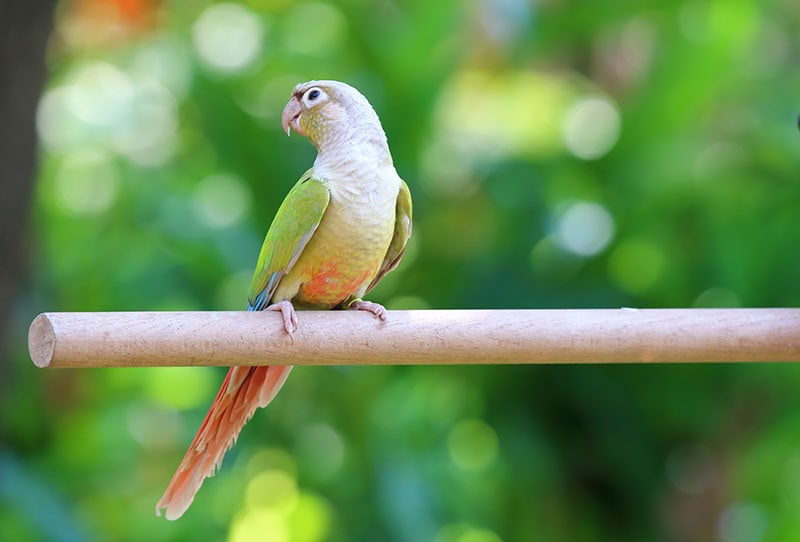
The plumage of this conure is a light beige or cream. This mutation looks like the Cinnamon, except the bird has a dark bluish-colored beak and dark feet. The eyes of the American Dilute are dark, and the hatchlings are covered with a beautiful white fluff.
The American Dilute is a friendly, fun-loving bird that enjoys playing with toys. They are gentle and affectionate and make excellent pets for first-time bird owners.
3. Yellow-Sided Green-Cheeked Conure
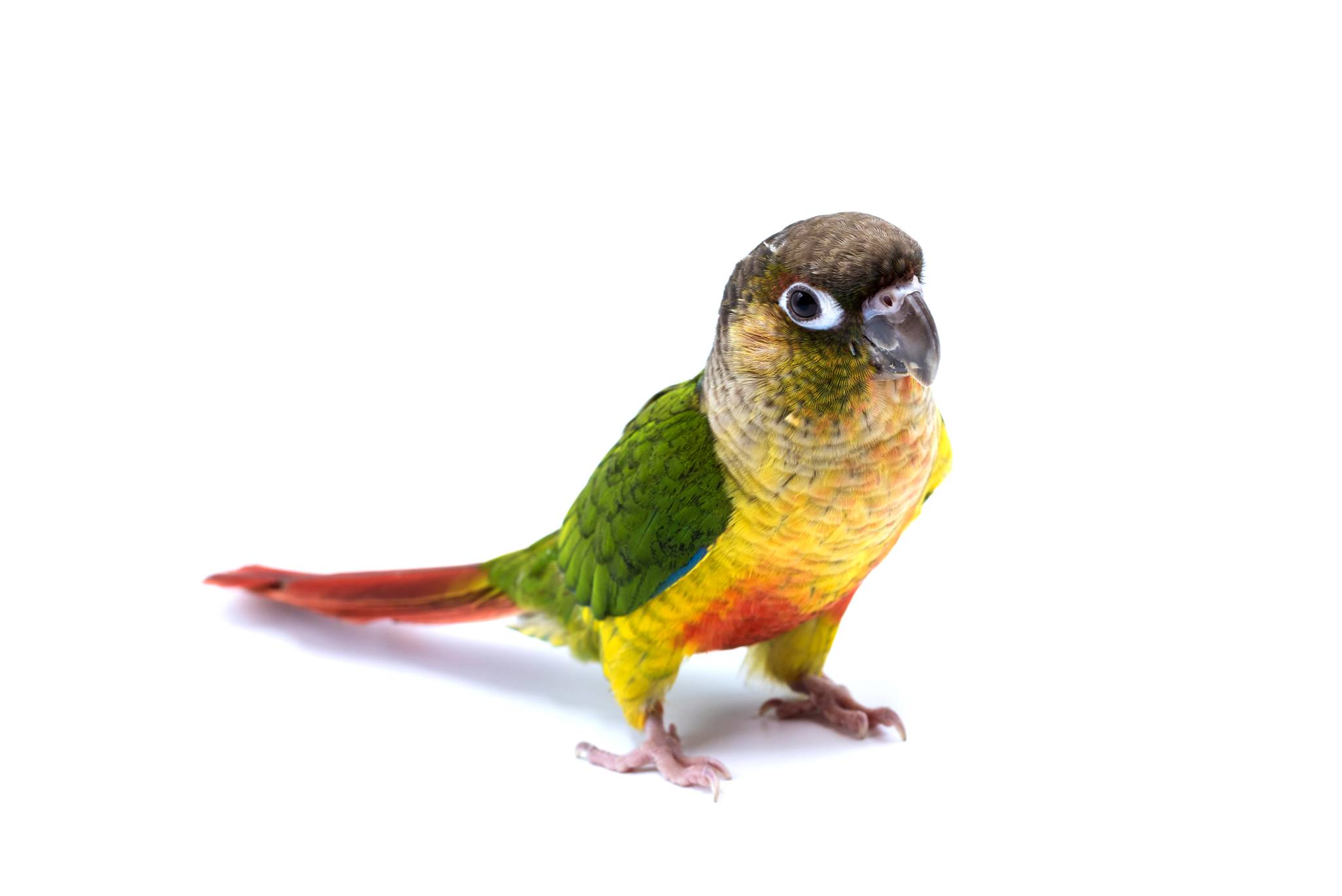
When viewed from the back, many people mistake the Yellow-Side Green-Cheeked Conure with the original, wild Green-Cheeked Conure. However, the Yellow Side is different because they have a bright yellow chest and a tail that is maroon or light red. The feet, beak, and eyes are dark.
The later generations of these conure mutations have lighter-colored beaks. Like the American Dilute, the hatchlings of Yellow-Sided Conures are covered with white fluffy down. The Yellow Side enjoys clowning around as much as it likes to snuggle up with its owner and take a nap.
This is a gentle, fun-loving bird that’s a joy to have around. You’ll never get bored of a Yellow Side’s antics!
4. Pineapple Green-Cheeked Conure
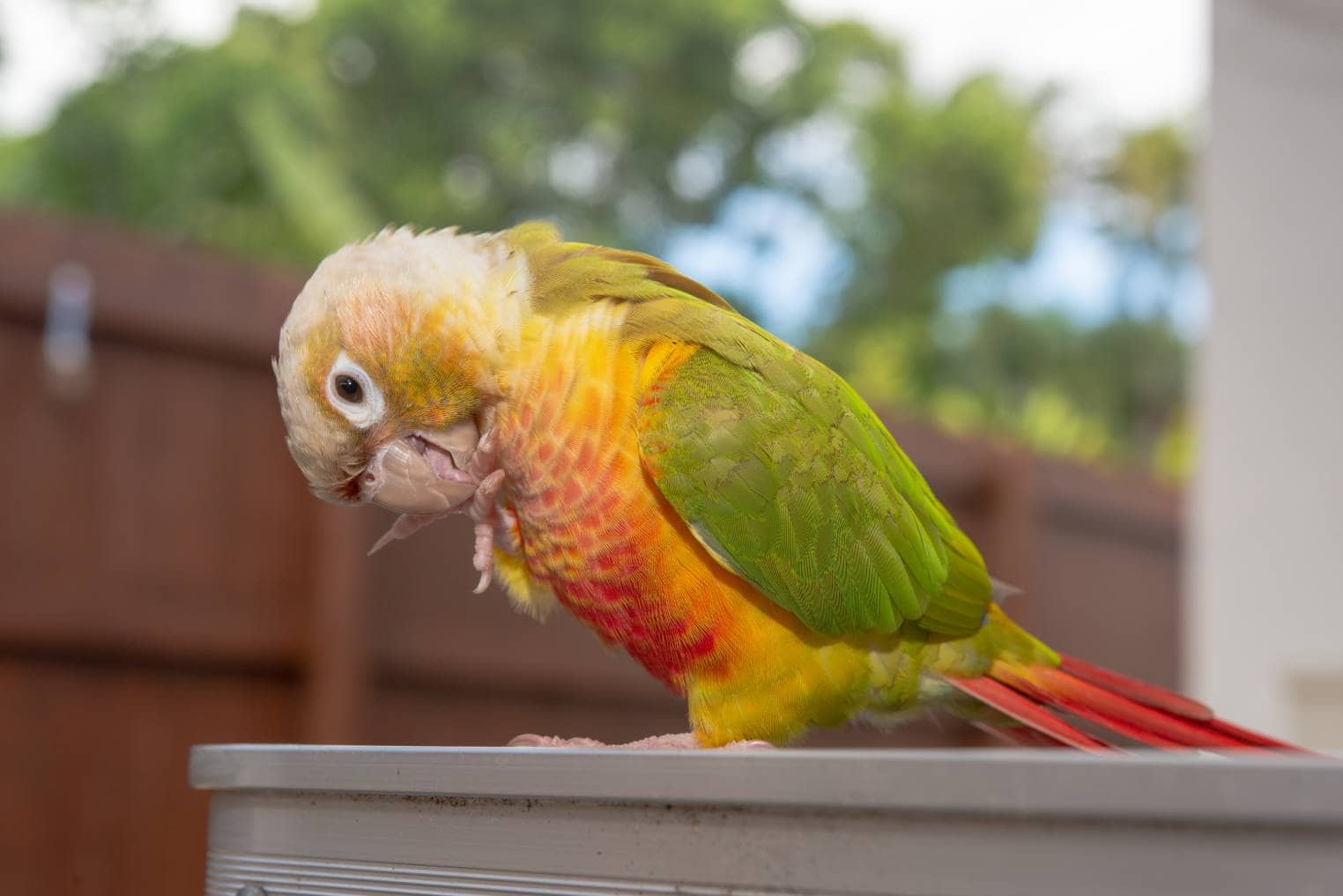
This bird is a visual combination of the Cinnamon and Yellow-Sided, and they have a light-colored head like the Cinnamon and the yellow sides of the Yellow-Sided. They have a brightly colored chest and lime-green back feathers like the Cinnamon mutation. They also have ruby-red eyes and pale tail feathers.
The Pineapple is bred from a Cinnamon and Yellow-Side Green Cheeked Conure, resulting in a bird that’s fun-loving and always willing to play. This bird can be a little shy at first, but they don’t take long to warm up to strangers.
5. Turquoise Green-Cheeked Conure
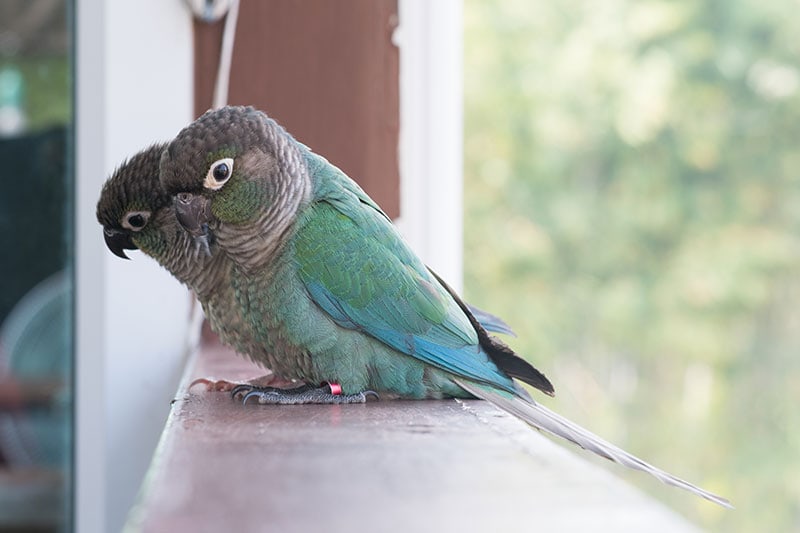
This mutation has resulted in larger conures than the original wild Green-Cheeked Conures. As the name suggests, the Torquoise has mostly bluish-green plumage with gray tail feathers. Their name comes from their turquoise green cheeks.
Of all the Green-Cheeked Conure mutations, the Turquoise is by far the most independent bird. They are known to be standoffish but are affectionate to their owners.
6. Muted or Ghost Green-Cheeked Conure
The Muted Green-Cheeked Conure mutation features muted mint plumage with a light blue head, chest, tail, stomach, and wings. People like this mutation because of the bird’s muted mint feathering color that covers their entire body.
This conure mutation has an affectionate personality and is loved by many due to their gentle nature. Muted Green-Cheeked Conuresl become attached to their owners. One downside to this mutation is that they pluck out their feathers when stressed or bored.

Final Thoughts
All the Green-Cheeked Conure mutations listed here are gorgeous birds that make great pets. Like all pet birds, Green Cheeked Conures can nip and be uncooperative at times, but generally, they’re easy-going and not difficult to keep.
Related read:
- How Much Does a Green Cheeked Conure Cost?
- How Long Do Green Cheek Conures Live? Average Lifespan, Data & Care
Featured Image Credit: Jida Xiu, Shutterstock
